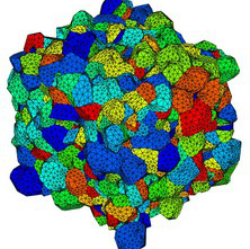The effect of microstructure on superalloy behaviour
Superalloys are combinations of metals with high strength and thermal performance, which make them suitable for structures undergoing mechanical and thermal stresses. In particular, nickel (Ni)-based superalloys have become essential for turbine blades and discs in the hottest part of aircraft engines. They also find critical applications in space vehicles and nuclear reactors. With EU funds, the MICROMECH (Microstructure based material mechanical models for superalloys) project developed a multi-scale computational model for polycrystalline Ni-based superalloys processed by casting and forging. It describes deformation and failure mechanisms as well as microstructural features and defects. Specifically, the MICROMECH model incorporates structural information from the level of micron-sized single crystals and polycrystals to polycrystalline specimens and components. It describes the effects of temperature on tensile strength, fatigue, crack propagation and creep based on microstructural properties, such as grain size, and surface conditions. The basic tool to predict the mechanical properties of polycrystalline specimens is finite element models of representative volume elements of their microstructure. Crystal plasticity models are used to simulate the behaviour of micropillars inside grains. To develop these, researchers relied on data obtained with micromechanical tests on single crystals and bicrystals milled from polycrystalline specimens. Extensive micromechanical testing led to a realistic and accurate multi-scale model, able to predict the mechanical properties of specimens used in the design of components. The developed model can predict the fatigue life under any test conditions of In718 alloys as a function of microstructure, temperature and applied stress. In the hands of engineers, the MICROMECH model promises to ensure improved Ni-based superalloy structures, with additional benefits related to cost, environmental sustainability and EU technological leadership.
Keywords
Microstructure, superalloy, computational model, MICROMECH, polycrystalline

